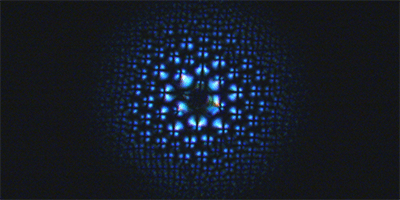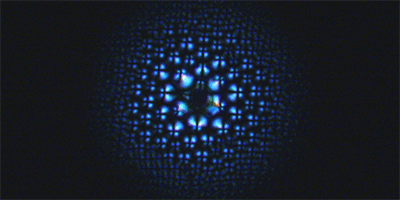Planting a Liquid-Crystal Garden
Early opticians spent months polishing lenses that could focus light into a clear image. But these days, nanotechnology may offer much faster ways to assemble, one molecule at a time, perfect optical components. In Physical Review X, Daniel Beller and his colleagues at the University of Pennsylvania in Philadelphia report they can use micro- and nano-sized particles to mold liquid crystals into light-focusing elliptical domains. Refining their recipe could lead to unconventional ways of making small-scale elements for guiding and sensing light.
The rod-shaped molecules in liquid crystals only transmit light along their long axis, a property that makes the materials useful in computer and TV displays. In the “smectic A” phase of a liquid crystal, the molecules both organize into parallel layers and orient themselves perpendicular to the layers. Depending on the chemistry of the molecules and the surfaces of the container that holds them, these layers can be bent into a variety of shapes that have unusual optical properties.
Beller and his colleagues have focused on a recently discovered structure where the layers curve around multiple ellipses that fan out radially from a common point, like the petals on a daisy. Since each “petal” can act as a focusing element for light, these structures could be used to concentrate light at an intense central point. But researchers have been uncertain about how to control the eccentricity of the elliptical petals, which determines the geometry of the whole smectic layer arrangement. Beller and his colleagues now show that anchoring a layer of the liquid crystals on at least one curved surface—such as a micrometer-sized bead or patches of nanoparticles on an underlying substrate—provides the necessary level of control, which they can predict with a mathematical model. – Jessica Thomas





